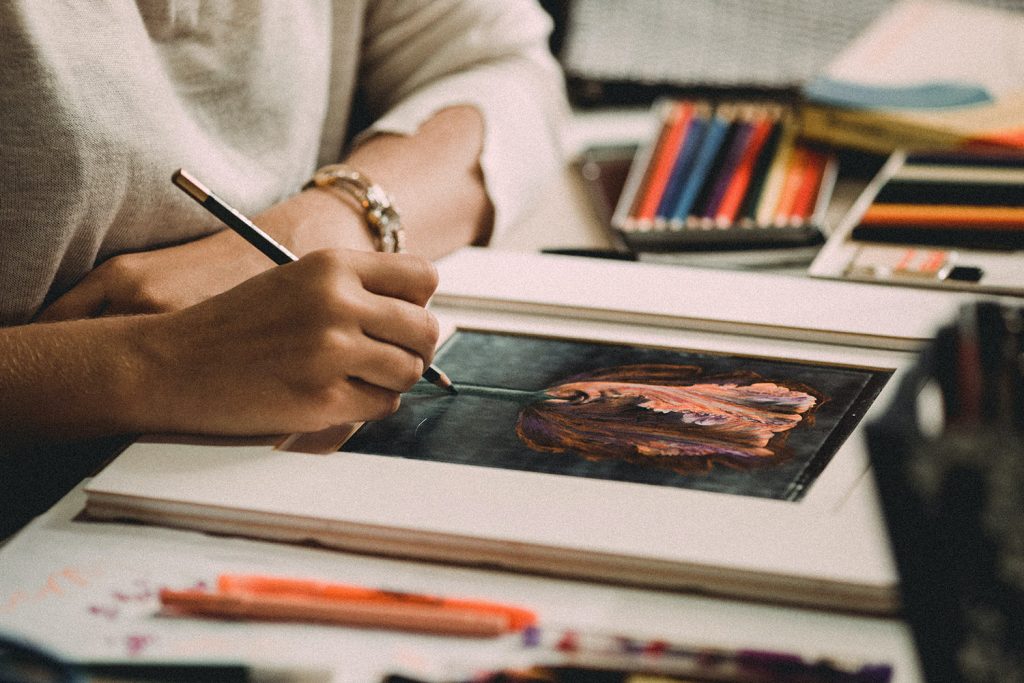The Julia Stoschek Collection is installed in a modern industrial architecture building, which dates to 1907. Before 1945, it was used first as a theatre workshop, then as an engine and lamp factory, a production facility for corsets and mattresses, and by the metal and wood industries for military purposes. Between the cinema room in the basement and the roof terrace above the new attic floor, a whole series of spatial experiences unfolds – from the closed to the open, from the dark to the light.
The latest exhibition, Generation Loss, constitutes a shimmering cave where mirrored projections, overlapping screens and digital shields choreograph steadily and firmly. The German time-based media art collection is celebrating ten years of growth, exhibiting works as Sanctus (1990) by Barbara Hammer, or videos as Revolution (2003) by Dara Friedman and Over My Shoulder (2003) by Douglas Gordon. The term “Generation Loss” is related to the process of a qualitative loss in successively copied data.
Julia Stoscheck notes: “The show in itself analyses ways in which generations of artists affect one another, influences which may cause revolt, revision and renewed accord; how artists’ moving image is a uniquely reactive, dependent medium whose intimacy with the vicissitudes of mainstream tech confers a kind of automatic collusion with the culture at large that is pretty much unique to it – to moving image works.“
A: What kind of meaning des the title Generation Loss embodies, express and reflect?
JS: The title was conceived by the curator Ed Atkins. As he notes: it is „A response to the medium specificity and what that might mean now, where most of the work’s structural reality is maintained as an illusion through digitisation.“
A: Why did you chose to collaborate with an artist such Atkins?
JS: Atkins focuses on the central question of how the moving image has changed under the influence of ever-changing technologies. Since we did the exhibition with him in 2013 we have had an extensive exchange of ideas; he is a central figure, not only for the collection. Atkins is considered a pioneer of an emerging generation of artists who reflect critically on the rapid development of the digital media and the fundamental changes it has brought about in our perception of images and ourselves.
A: How did you curate the selection?
JS: Formally, the exhibition visibly connects works in a sort of straightforward, socially demonstrative way: projected works are screened in choreographed sequences and in proximity to one another. This is partially achieved using acoustic glass to divide the works and effectively block sound leaks, but the display allows you to see through to other spaces, and in turn, to the other pieces. We didn’t want to proceed with the works in the usual way – the pre-eminent, isolated black box of video installation. We worked with the idea that no work should be alone, they should all be in relation.
A: During the last ten years, how have your interests changed? What moment in your life would you say was the most relevant as a collector and video connoisseur?
JS: My enthusiasm has not change per se, I’m even more enthusiastic about the collection and what I’m doing. But my perception of video or time-based media art had changed enormously. The more you see, the more you know about art and also about yourself. But I think the most important encounter for me was the visit of the first private collection: the collection of Harald Falckenberg in Hamburg in 2002. That was indeed a life changing moment and I wouldn’t be here without this experience.
Generation Loss runs until 10 July 2018. For more information: www.julia-stoschek-collection.net
Credits:
1. Ulay and Marina Abramovic. Relation in Time.




